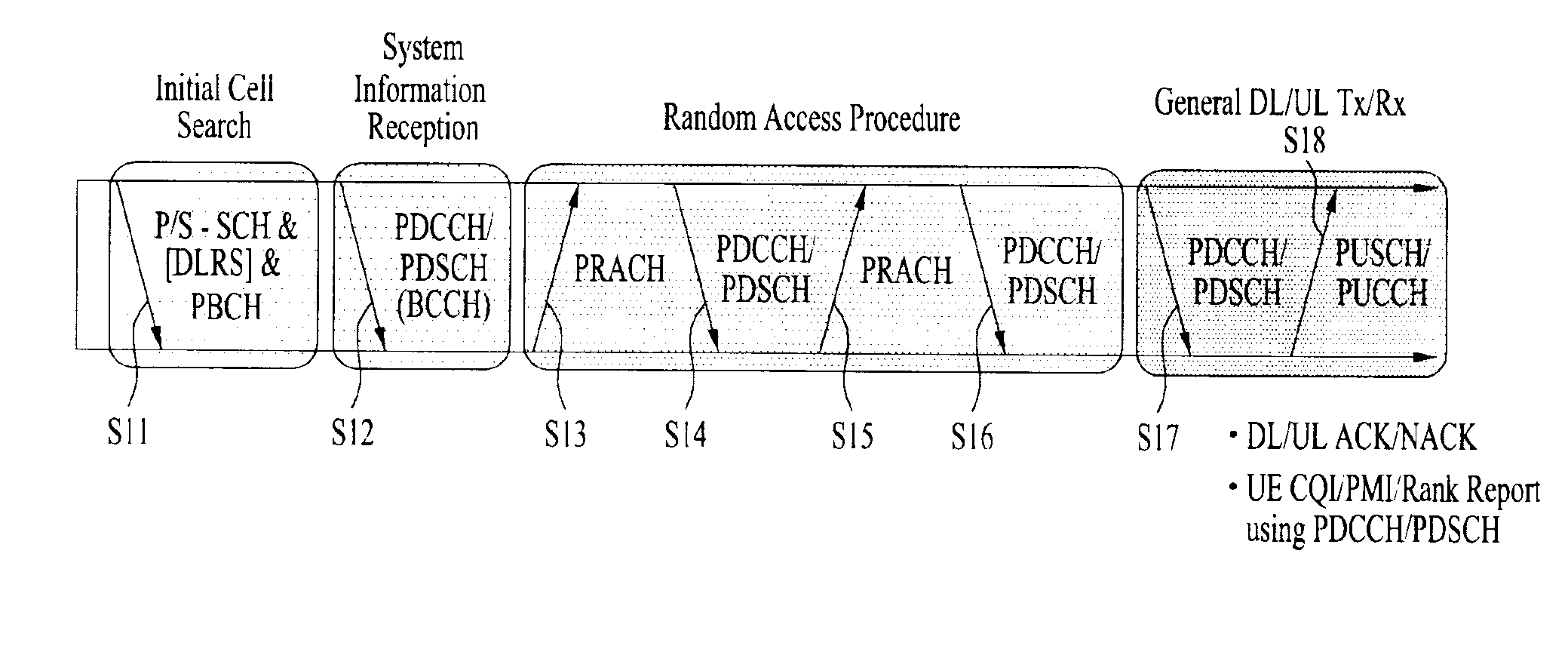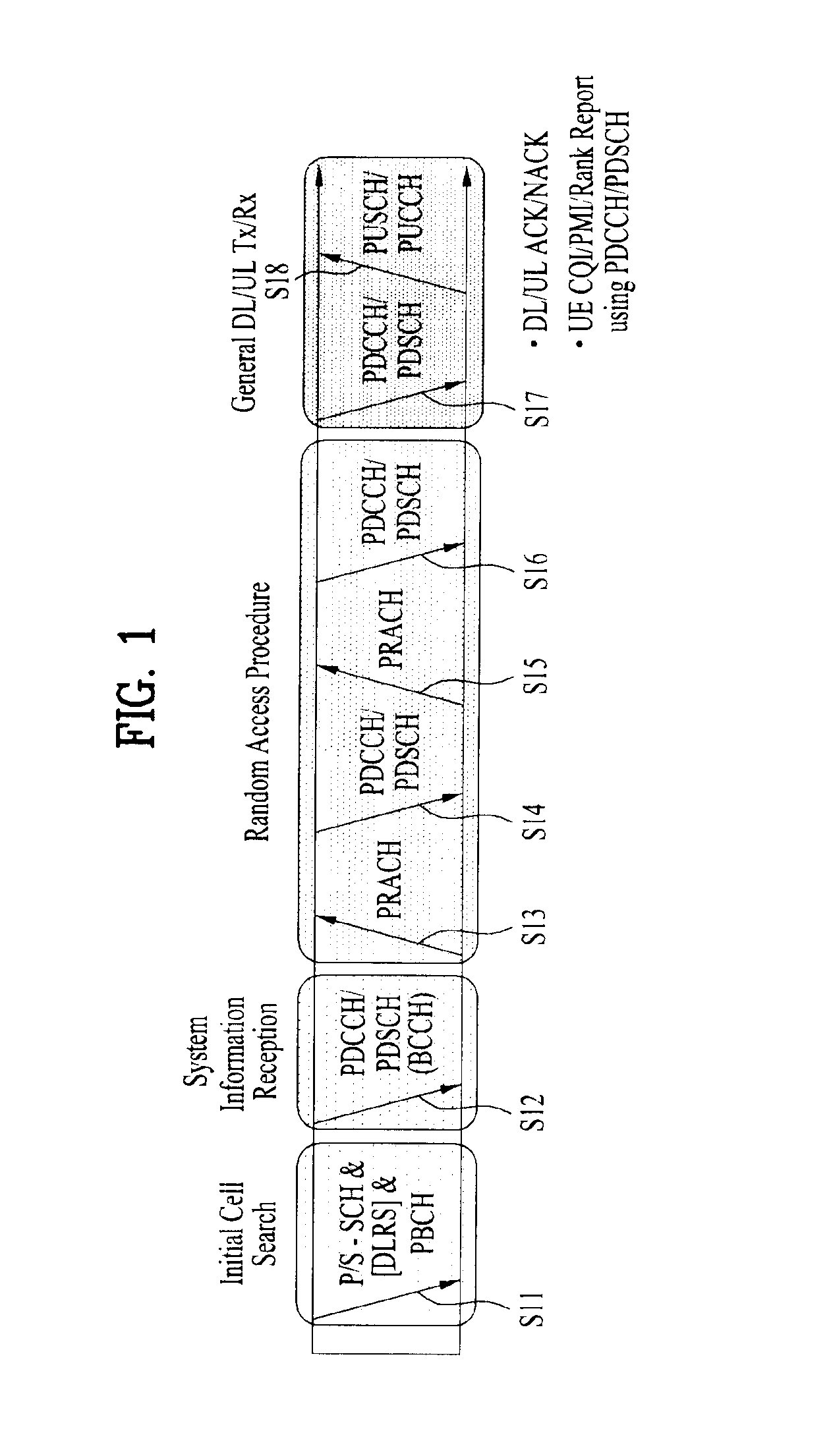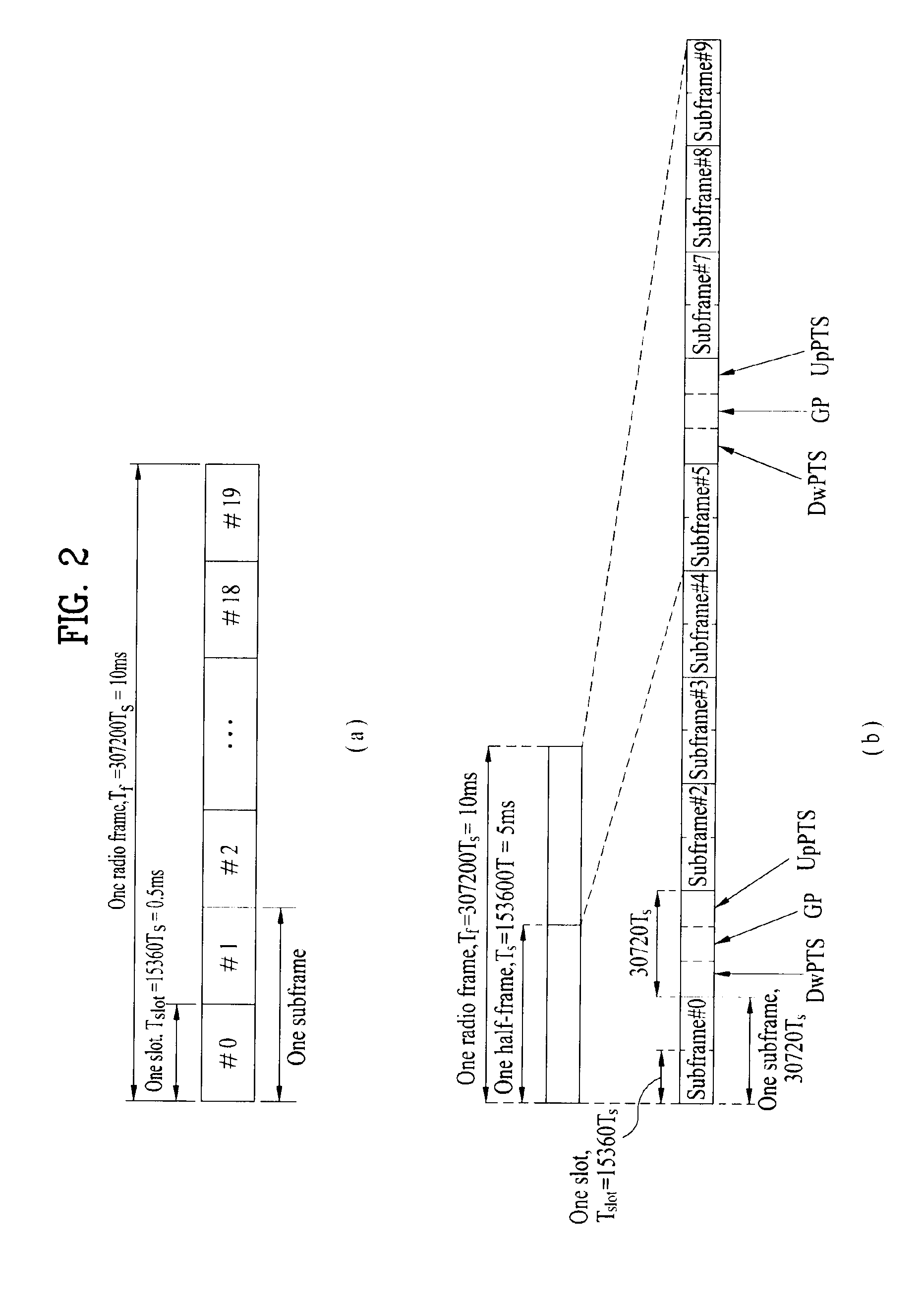Method for transmitting/receiving data in wireless communication system and base station for same
a wireless communication and wireless communication technology, applied in the field of wireless access systems, can solve problems such as data transmission/reception, and achieve the effect of smooth transmission
- Summary
- Abstract
- Description
- Claims
- Application Information
AI Technical Summary
Benefits of technology
Problems solved by technology
Method used
Image
Examples
Embodiment Construction
[0042]Reference will now be made in detail to the preferred embodiments of the present invention, examples of which are illustrated in the accompanying drawings. In the following detailed description of the invention includes details to help the full understanding of the present invention. Yet, it is apparent to those skilled in the art that the present invention can be implemented without these details.
[0043]Occasionally, to prevent the present invention from getting vaguer, structures and / or devices known to the public are skipped or can be represented as block diagrams centering on the core functions of the structures and / or devices.
[0044]In this specification, embodiments of the present invention are described centering on the data transmission / reception relations between a base station and a terminal. In this case, the base station may be meaningful as a terminal node of a network which directly performs communication with the terminal. In this disclosure, a specific operation ...
PUM
 Login to View More
Login to View More Abstract
Description
Claims
Application Information
 Login to View More
Login to View More - R&D
- Intellectual Property
- Life Sciences
- Materials
- Tech Scout
- Unparalleled Data Quality
- Higher Quality Content
- 60% Fewer Hallucinations
Browse by: Latest US Patents, China's latest patents, Technical Efficacy Thesaurus, Application Domain, Technology Topic, Popular Technical Reports.
© 2025 PatSnap. All rights reserved.Legal|Privacy policy|Modern Slavery Act Transparency Statement|Sitemap|About US| Contact US: help@patsnap.com



